A sink is composed of a sink rim and a bowl. The sink rim is responsible for bearing the weight, and the bowl is where you load things.
According to the hand-made sink combination method, there are two different manufacturing processes: the load-bearing welding and the non-load-bearing welding method.
Non-load-bearing Welding Method
A combination of two parts
This welding method is a combination of the sink rim and the basin. All of the sink bowls were initially cut and formed by welding all around.
This kind of basin and the rim are separate pieces of materials. The two parts of the material are welded together, and the weld marks are polished to form a finished sink.
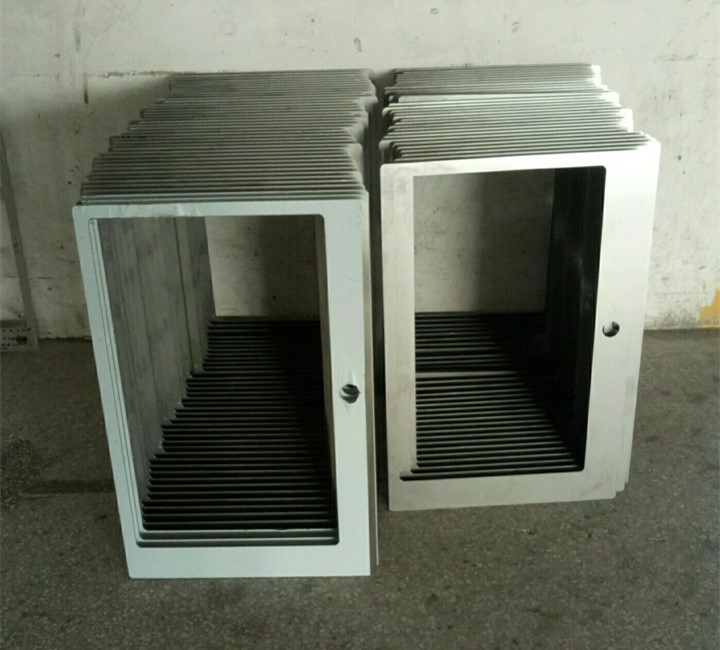
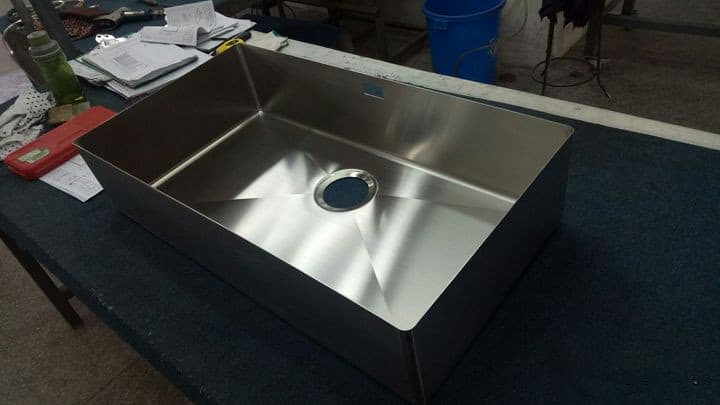
Welding Position Analysis
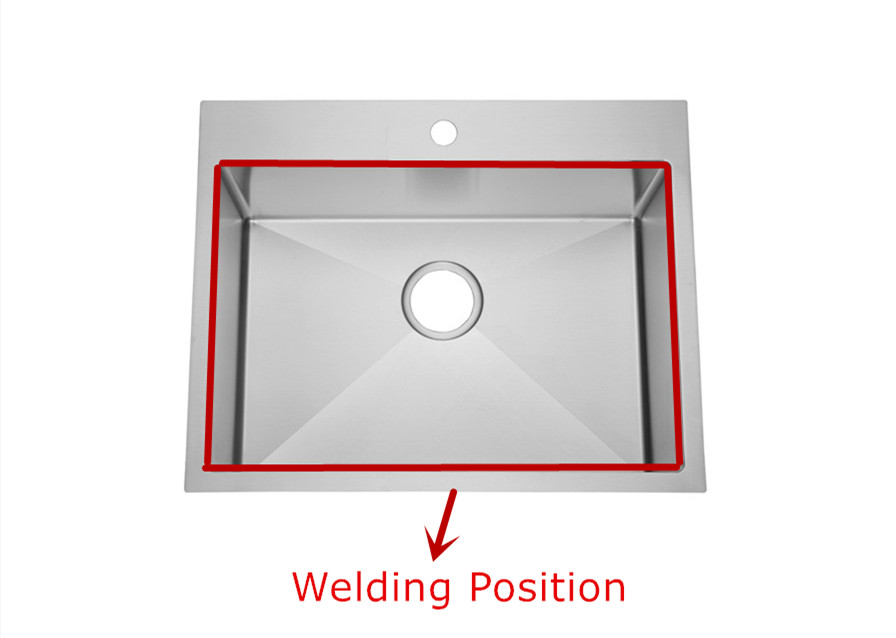
Disadvantages
This sink is a combination of the panel and the bowl. Therefore, the load-bearing capacity is relatively weak, and you run the risk of significant defects. These defects include cracking and blast welding. The sink bowl may even fall off if you use it for a long time.
Although welding is a robust connection method, the connection area is small. So this method is not a safe one. Even for thick materials, for example, 4mm stainless steel, this option is not feasible. It’s not about the thickness of the material; this is the welding method that is used.
Let’s see the welding for the corner.
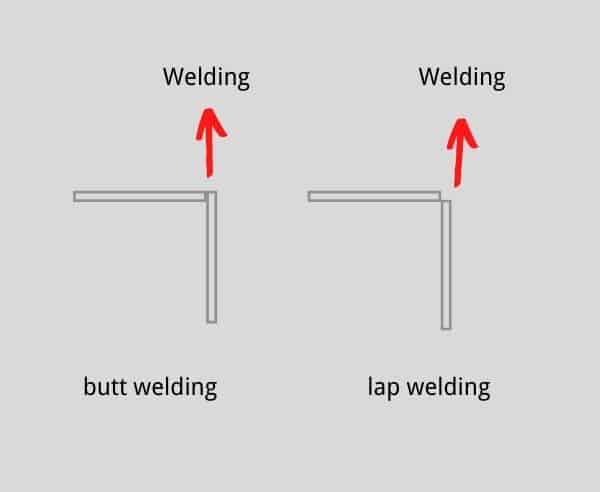
On the left side, you see butt welding because the two pieces of material have a flush interface. Only one layer of the connecting surface will melt when you weld the materials together.
After that, the corners will be polished.
On the right is the case of lap welding. We can understand by looking at the picture that the material is overlapping, and welding is done at the material’s edge.
After the welding is complete, the welding position is polished, and it becomes fragile.

Therefore, for non-load-bearing welded sinks, you crack the panel and the basin’s joints after using it. Moreover, the polishing keeps on thinning the surface of the material, making it hard for the material to withstand the test of time.
These are some of the hidden defects of the process. The manufacturers, not the consumers, only enjoy the benefits of this process.
The stainless steel will save a lot of bends and corners because of the use of the laser. Moreover, this process will also save a lot of material, and it is effortless too.
Load-bearing Welding Method
Integral Bending Welding Process
As shown in the above picture, the sink rim and the basin are cut from a piece of material. It’s one-piece, not separate. Furthermore, the welding position is a small part of the corner position. It isn’t the entire panel welding pot.
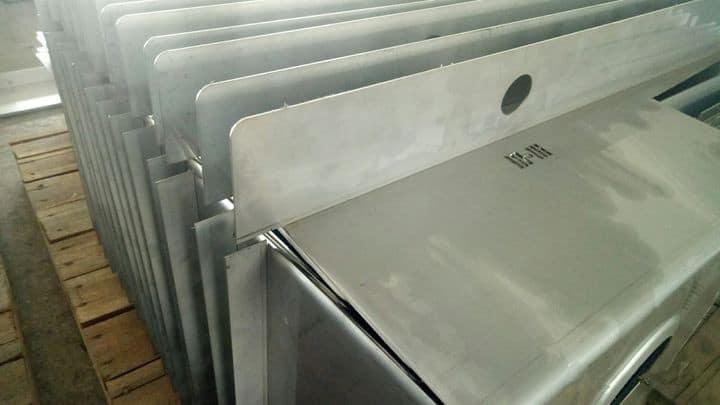
Welding Position Analysis
The short line with the standard red color is the welding path that is to be used for the welding. The green lines indicate the position where the side of the sink and the panel are connected without welding.
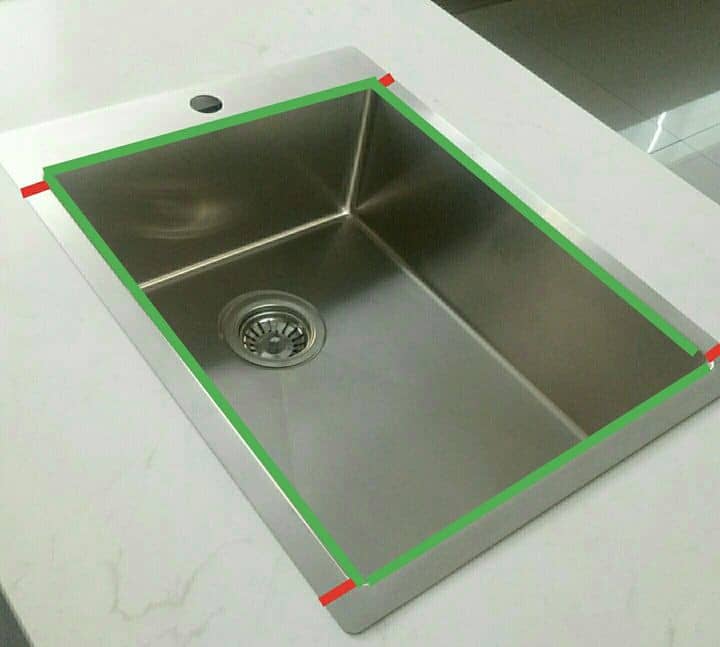
The integral bending is the sink’s body itself. When the material is laser cut, the bowl and the panel are no longer two different materials. They are formed to be the same material. The load-bearing capacity of the sink relies on the strength of the connection on the side of the sink.
However, this position is usually firm, and your sink probably won’t fall off.
Since there is no welding on the surface, the load-bearing performance is more guaranteed.
Disadvantages
One of the most significant disadvantages of this welding method is that it consumes more materials. We can see the picture below; the material cutting is a cross- shape. One can no longer use the remaining materials. It can be seen that a lot of materials have been wasted.
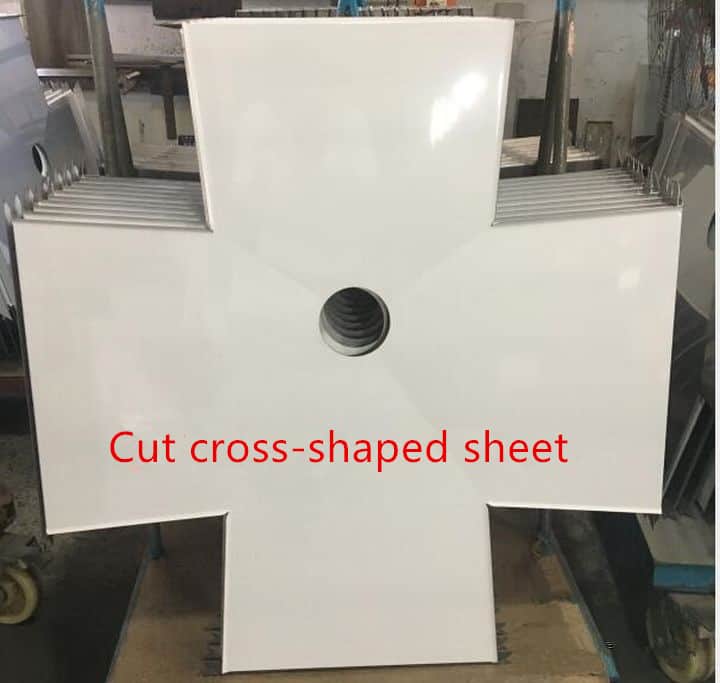
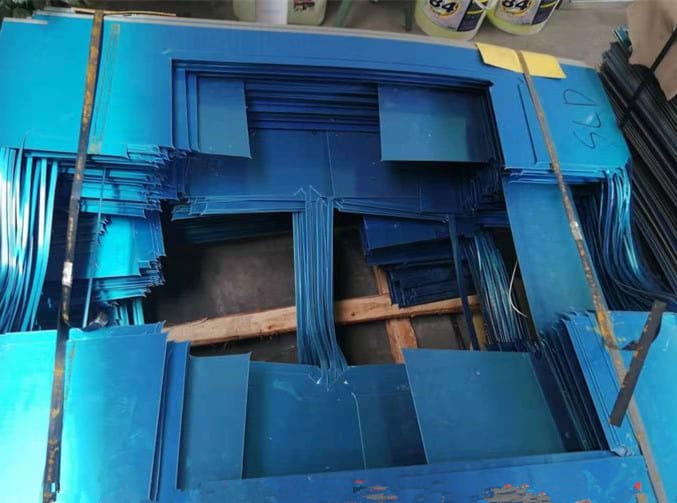
How To Distinguish Between These Two Processes
Observed by the back
If possible, look at the back of the sink rim.
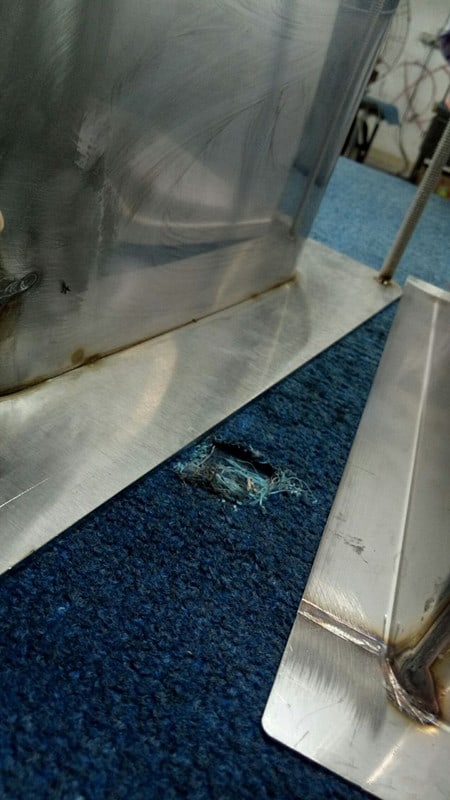
In the picture above, on the left, we can see a non-load-bearing sink. The the sink edge is yellow, which is a welding circuit.
On the right is the load-bearing sink. We can see that the connection between the sink rim and the basin is a long and bright bending part. This shows that this position is a bending process, not a welding process. And there is only a short line, that is the welding trace.
Observed from the front
If an anti-condensation coating covers the back, distinguish it from the front.
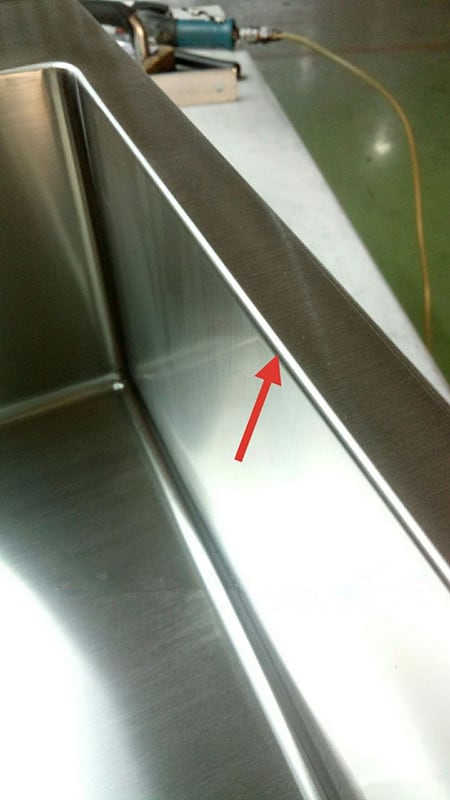
The load-bearing welding has a natural transition while the steel was bend. It has a specific arc.
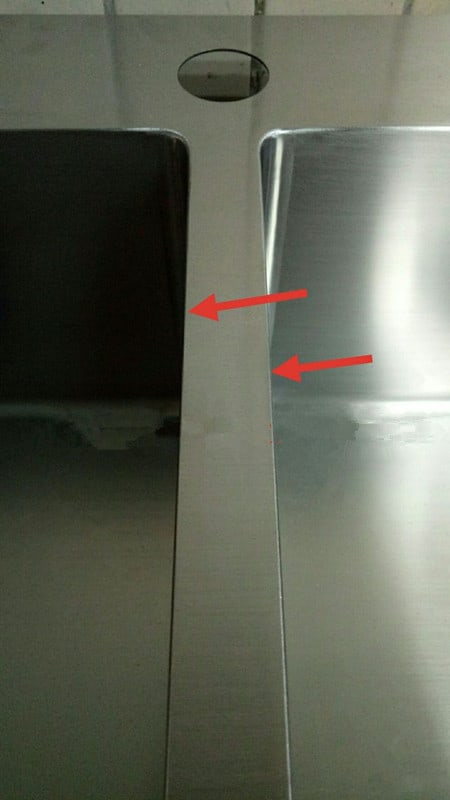
While the non-load-bearing welding sinks have a welding position, there is a small arc in the transition even after polishing.
Distinguish by the manufacturing process
As we have analyzed the difference between the two manufacturing processes, the non-load-bearing welding sink uses two different steel sheets; The load-bearing welding method uses a whole piece of material.
You can quickly get the information from the manufacturer.
Suppose a sink’s rim and the basin are of the same thickness. That is to say, 99% of this sink is manufactured by the load-bearing welding method.
Abschluss
As a consumer, you need to know what is selling to you and whether it will provide value.
Ich hoffe, dieser Artikel hat Ihnen bei der Entscheidungsfindung geholfen.
Viel Glück!









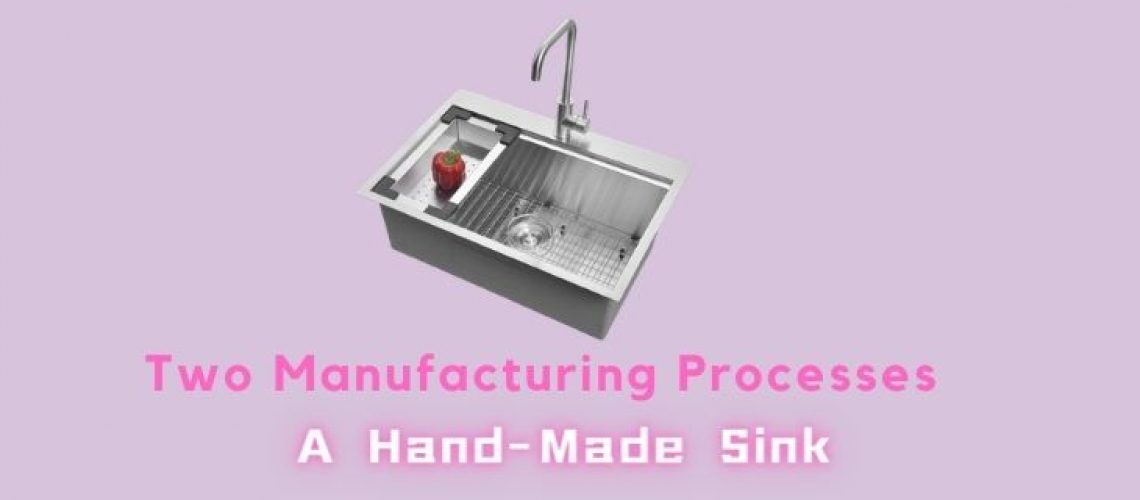

2 Gedanken zu „Two Manufacturing Processes Of A Hand-Made Sink”
It’s a pity you don’t have a donate button! I’d without a doubt donate to this fantastic
blog!
I suppose for now I’ll settle for book-marking and adding your RSS feed
to my Google account.
I look forward to fresh updates and will share this website
with
my Facebook group. Chat soon!
Thank you for sharing. Cheer up!